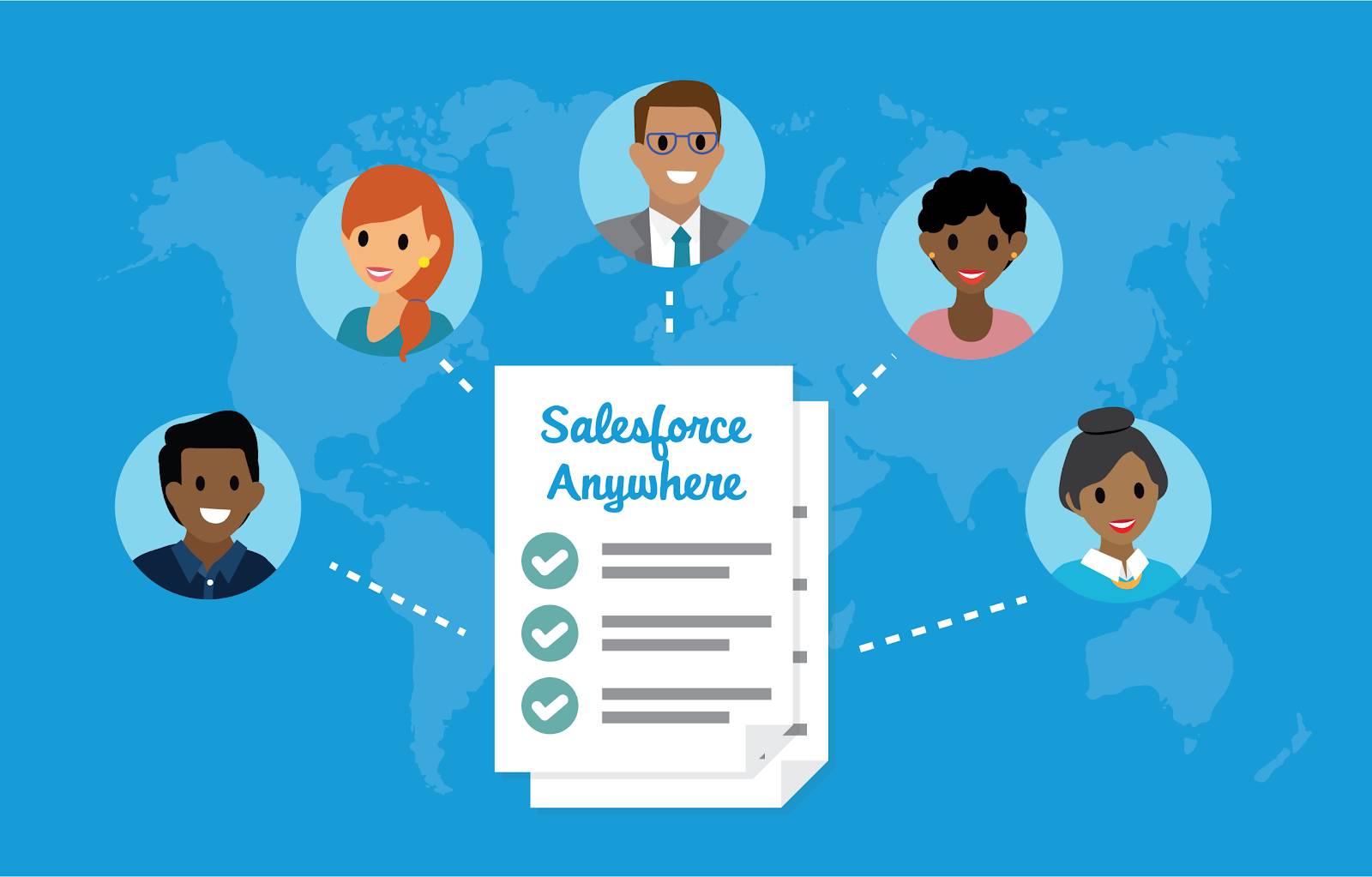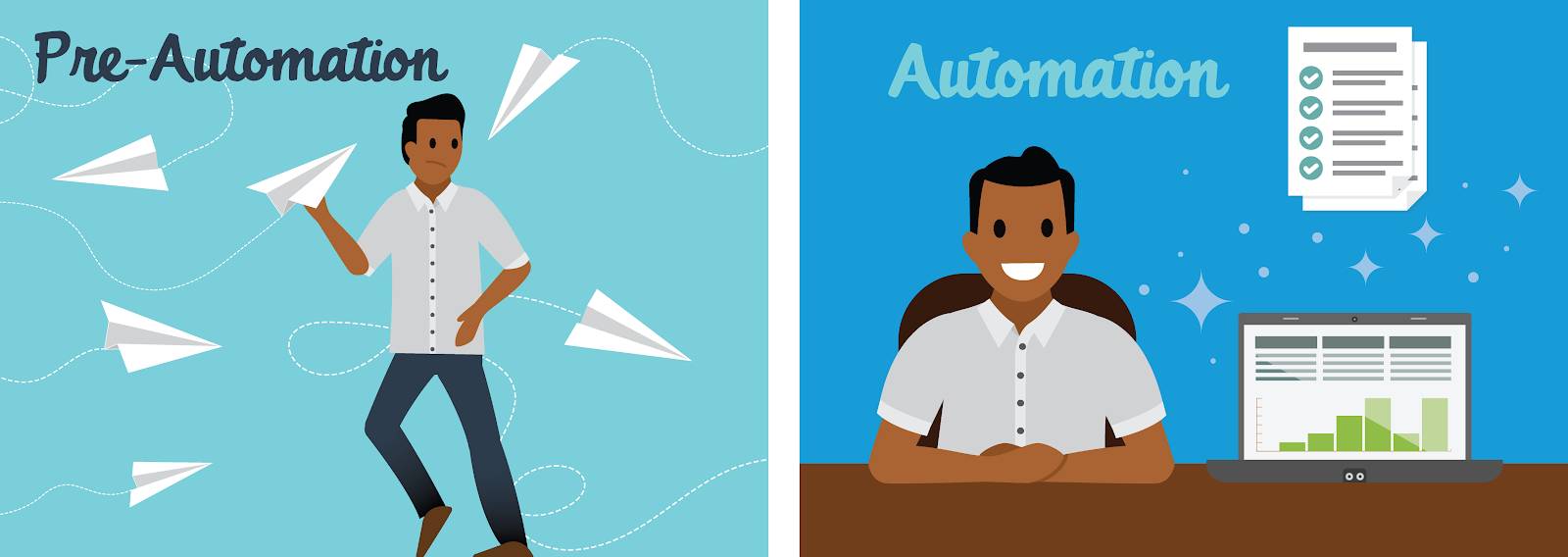Apply Quip Using Specific Use Cases
Learning Objectives
After completing this unit, you’ll be able to:
- Use Flow Builder to create organized flows and automatically share documents and information.
- Use Quip actions to add documents, spreadsheets, chatrooms, and notifications into Salesforce instances.
- Find resources to help you learn about Flow Builder.
Now that you understand Quip, what does that actually mean for your team? Below are a few common use cases, so you can get a better sense for what might work for your team.
Scenario 1: Document Sharing and Automation
A member of your team comes to you and says she is having trouble sharing documents. She just created a “Call Notes” document she wants to share with the sales team. What are your options for automation?
This is where automatic sharing comes in. One of the pain points that you’re hoping to solve for with Quip is you want the right people to have access to the right docs, and make sure no one is left out of the loop. So, how do you make sure the right people are included?
One solution is to tell your coworker to add her document to a folder when she creates it. The Add to Folder option automatically puts that new document into a folder. When someone is a member of a folder, and a document is added to that folder, they would automatically become a member of that document as well. That makes this a quick and easy way to add a group of people to a document automatically. So, if your coworker adds her document to a folder that her customer service reps are already members of, they will automatically get access to her new messaging doc.

Another option is for your coworker to add opportunity team members to existing documents. This adds people that are associated with a specific Salesforce record. It’s an easy way to ensure the account or opportunity owners and members are a member of the doc.
Let’s say your coworker wants to share her messaging document with the sales team for a specific client. By using automation to add opportunity team members to her document upon creation, she can make sure just the right people have access to her content.
There is no one right answer to the question of how to share documents, but slight differences in your use case will help determine what’s right for you.
Scenario 2: Automatic Document or Template Creation
Maybe you want to have more control when a document is created, such as when a record is created or is at a certain stage.
Let’s say a new account manager, Zahara, just joined your team. Using automation, you can automatically trigger the Account Plan right as the account is created. This ensures a seamless onboarding for her and also guarantees nothing falls through the cracks as she learns her new role.

Scenario 3: Manage Opportunities
A coworker comes to you looking for a way to streamline his opportunity management process. There are two major functionalities to direct him to.
One is Live Paste. With Live Paste, you can copy content from one document and paste it to another. Live pasted content is automatically updated when anything from the source document changes. A use case here is to Live Paste a section of the account plan to the opportunity notes. That way, key account information is easily accessible on the opportunity notes and is always up to date. This is especially important if there are still other open opportunities on an account, even after one opportunity closes.
Looking at this through the lens of a manager, managers want account plans to be locked after the opportunity is closed to be able to refer back to it for record keeping. The locking edits feature lets them protect the document from getting edited further. It’s generally a best practice to lock edits on close plans after the deal has been won or lost.
Scenario 4: Automatic Notifications
You work on a highly collaborative, fast-paced team. People are constantly creating new documents for customers, as well as internal documents, and things get lost in the shuffle. How can you solve for this with your team?

Let’s combine this with some automation from our example above. Imagine if you had automatically added the opportunity team members to the document. Then, you could automatically send an @everyone message when a new document is created: “Check out this new document, {name of doc} sales team!” Only the people added to that account are on the document, so those are the people who get a notification.
That way, the system can do it automatically instead of having to ping each person, and nothing falls through the cracks. It’s very clear who on the team needs to take action—and when.
Closing Thoughts on Automation
The beauty of automation is that its possibilities are endless. Hopefully, you’re inspired to start brainstorming new ways you can create automation for your teams. You might also consider using a test pilot group for your first few automations so you can work out any bugs ahead of rolling out the automations with your team.
Now that you have an idea of best practices around how to get to the most optimized automation and have gotten inspiration from what other people are doing, you can pitch these ideas to your team in a way that will be impactful to them. The more you can systematize day-to-day tasks and flow, the better.
Not sure what to say to your leaders? A good place to start is to revisit the original pain points you’re trying to solve with Quip. Ask, “What is the main thing you want our team to focus on?” “What hurts about this process, and how can we fix that for you?”
As a Salesforce admin, it’s your job to build these automations and know what’s possible, but also to do so in conjunction with your leaders. The more complex your issues, the more you can combine ideas. Sure you could do each of these, but how can you combine them into complex highly effective automation?
For additional resources as you get started in Flow Builder, review the Resources section. The sky's the limit for you and your team!